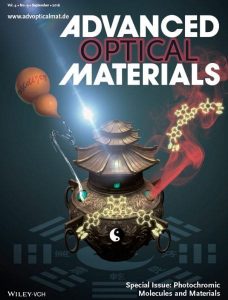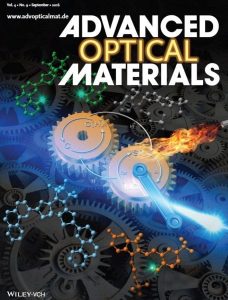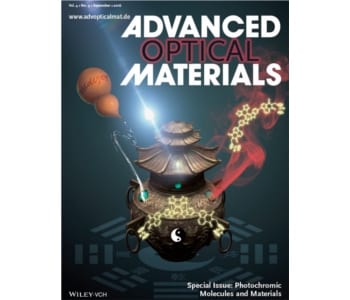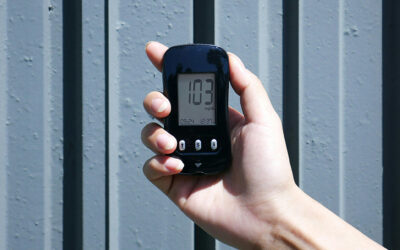The new Special Issue in Advanced Optical Materials, which is guest edited by He Tian and Stefan Hecht, highlights current developments in the field of photochromic molecules and materials. The issue accompanies the 8th International Symposium on Photochromism 2016 (ISOP 2016) which is taking place from November 4th to 7th in Shanghai.
The photoswitchable molecules and materials presented in the issue change certain properties upon irradiation. This ability makes them suitable for a variety of applications in optoelectronic devices, biotechnology, and pharmacology.
Access the issue and read about exciting new sensors, holograms, and switches here.
These articles are highlighted on the covers of the Special Issue:
Fluorescence Switches
 On the front cover, new gated photochromism and fluorescence switches are highlighted, which are successfully achieved in a ferrocene-modified diarylethene system with a sterically hindered ethene bridge. The photoinactive parallel conformer and photoactive antiparallel conformer are individually investigated by W.-H. Zhu and co-workers. The different conformers show redox-gated photochromism and reversible redox reactions can also switch the fluorescence of the naphthalimide chromophore “ON” and “OFF”.
On the front cover, new gated photochromism and fluorescence switches are highlighted, which are successfully achieved in a ferrocene-modified diarylethene system with a sterically hindered ethene bridge. The photoinactive parallel conformer and photoactive antiparallel conformer are individually investigated by W.-H. Zhu and co-workers. The different conformers show redox-gated photochromism and reversible redox reactions can also switch the fluorescence of the naphthalimide chromophore “ON” and “OFF”.
Photochromism
 In their work, which is highlighted on the inside cover, Y. Yokoyama and co-workers demonstrate that upon irradiation with blue light, the spiropyran MC-isomer (bottom/right) is changed to the SP-isomer (top/right). During this process, protons are transferred from SP to the blue diarylethene (DAE)-C (bottom/left) for conversion to DAE-C(H+)2 (top/left). While SP reverts to MC thermally, protons return from DAE-C(H+)2 to MC. Thus, the absorption band position of DAE-C is continuously controlled only by light irradiation of the MC–SP conjugate.
In their work, which is highlighted on the inside cover, Y. Yokoyama and co-workers demonstrate that upon irradiation with blue light, the spiropyran MC-isomer (bottom/right) is changed to the SP-isomer (top/right). During this process, protons are transferred from SP to the blue diarylethene (DAE)-C (bottom/left) for conversion to DAE-C(H+)2 (top/left). While SP reverts to MC thermally, protons return from DAE-C(H+)2 to MC. Thus, the absorption band position of DAE-C is continuously controlled only by light irradiation of the MC–SP conjugate.

















